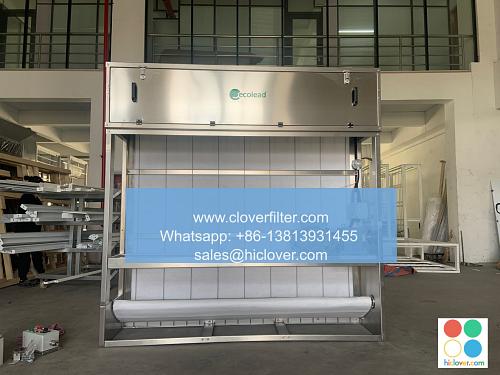Biological Airborne Contaminants: The Challenges of Airborne Pathogen Prevention

The spread of biological airborne contaminants, such as influenza viruses, tuberculosis bacteria, and Legionella pneumophila, poses a significant threat to public health, particularly in indoor environments like hospitals, schools, and offices. The prevention of airborne pathogen transmission is a complex challenge that requires a multi-faceted approach, involving air quality monitoring, ventilation system optimization, and personal protective equipment (PPE). In this article, we will discuss the challenges of airborne pathogen prevention and highlight various application areas where airborne contaminant control is crucial.
Understanding Biological Airborne Contaminants
Biological airborne contaminants refer to microorganisms that are suspended in the air and can be inhaled, causing infections and respiratory diseases. These contaminants can be bacteria, viruses, fungi, or other microorganisms that are present in the environment. The spread of biological airborne contaminants can occur through person-to-person contact, contaminated surfaces, and airborne transmission.
Risks Associated with Biological Airborne Contaminants
The risks associated with biological airborne contaminants are significant, particularly in high-risk environments such as hospitals, clinics, and other healthcare settings. The spread of airborne pathogens can lead to outbreaks of infectious diseases, which can have severe consequences, including morbidity and mortality. Additionally, the economic burden of airborne pathogen transmission can be substantial, with costs associated with medical treatment, lost productivity, and other indirect costs.
Challenges of Airborne Pathogen Prevention
The prevention of airborne pathogen transmission is a complex challenge that requires a comprehensive approach. Some of the key challenges include:
* Lack of awareness about the risks associated with biological airborne contaminants
* Inadequate ventilation systems that fail to provide sufficient air exchange rates and air filtration
* Ineffective personal protective equipment (PPE) that fails to provide adequate protection against airborne pathogens
* Insufficient air quality monitoring that fails to detect the presence of biological airborne contaminants
Application Areas for Airborne Contaminant Control
Airborne contaminant control is crucial in various application areas, including:
* Healthcare settings: hospitals, clinics, and other healthcare facilities where patient care is provided
* Schools and universities: educational institutions where students and staff are at risk of airborne pathogen transmission
* Office buildings: commercial buildings where employees and visitors are at risk of airborne pathogen transmission
* Industrial settings: manufacturing facilities, warehouses, and other industrial environments where workers are at risk of airborne pathogen transmission
* Transportation systems: airplanes, buses, and trains where passengers and crew members are at risk of airborne pathogen transmission
Solutions for Airborne Pathogen Prevention
To prevent the spread of airborne pathogens, it is essential to implement a comprehensive approach that includes:
* Air quality monitoring to detect the presence of biological airborne contaminants
* Ventilation system optimization to provide sufficient air exchange rates and air filtration
* Personal protective equipment (PPE) that provides adequate protection against airborne pathogens
* Surface disinfection to reduce the risk of surface-to-air transmission
* Education and awareness about the risks associated with biological airborne contaminants and the importance of airborne pathogen prevention
In conclusion, biological airborne contaminants pose a significant threat to public health, particularly in indoor environments. The prevention of airborne pathogen transmission requires a multi-faceted approach, involving air quality monitoring, ventilation system optimization, and personal protective equipment. By highlighting various application areas and solutions for airborne pathogen prevention, we can work towards reducing the risks associated with biological airborne contaminants and protecting public health. It seems like you forgot to include a prompt. Please go ahead and ask me anything or give me a topic to discuss, and I’ll be happy to help!

